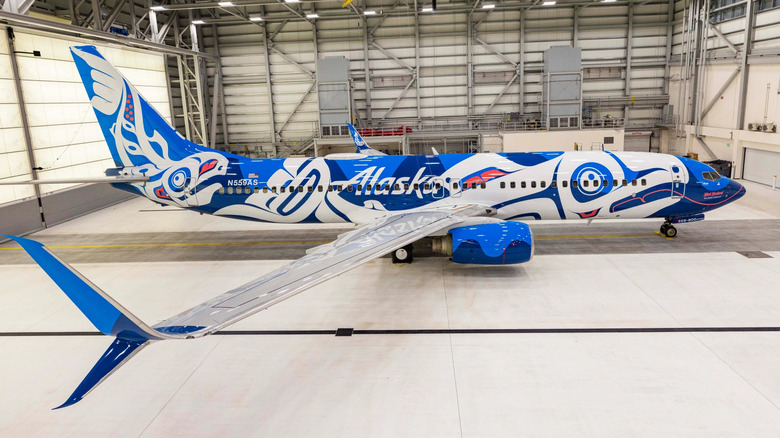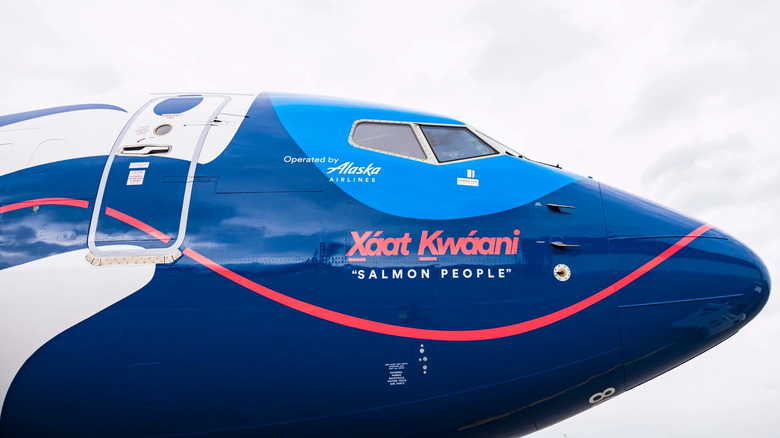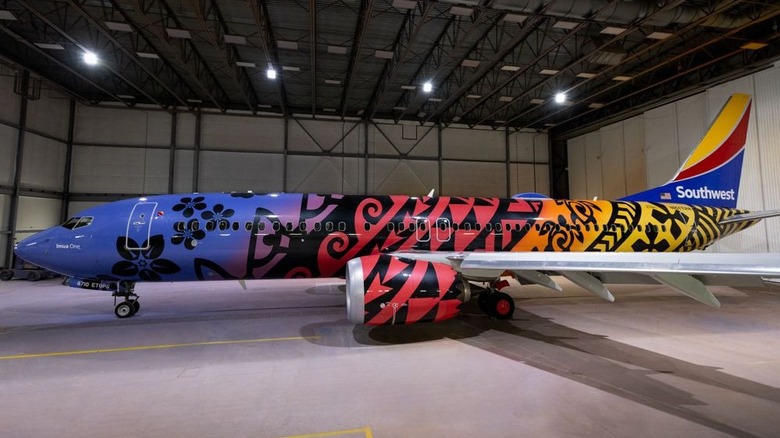These U.S. Planes Celebrate States' Indigenous Cultures With Custom Paint Jobs
Art has often been an important form of cultural expression for Indigenous peoples. Sculptures, carvings, and paintings, among other artforms, are being unearthed and preserved, some dating back thousands of years. Often these artworks will tell the stories of and celebrate the clans and tribes from which they originated. For two Indigenous cultures on opposite sides of America's borders, this tradition continues in one of the unlikeliest places: the sky.
Two commercial jetliners now bear the artwork of two distinct Indigenous peoples, designed in a culturally respectful manner by two Indigenous artists. While airlines will sometimes debut custom paint jobs for planes in their fleets, usually as a novelty, the respectful use of Indigenous art on planes flying over the land of the peoples who inspired the art is a thoughtful combination of the old and the new. The designs of these two planes pay homage to Indigenous peoples while highlighting their stories.
Alaska Airlines pays tribute to the Salmon People
One of the planes is a Boeing 737-800 in Alaska Airlines' fleet. It's wrapped in a distinct art style known as formline, which is thousands of years old and was traditionally used by the Tlingit peoples. The colors primarily blue, white, and pink, and depict two sockeye Salmon, fitting for both the Tlingit and Alaska Airlines. These planes carry tons of salmon from Alaska to Seattle and now its fleet displays salmon-based art. Salmon are incredibly important to the Tlingit, who inhabited the Pacific Northwest and can still be found in southeast Alaska. The Alaskan Tlingit words "Xáat Kwáani" translate to "Salmon People" and can be found on the aircraft doors.
The art, like other formline works, features two-dimensional, curving lines that run across the plane's fuselage. It was created by Indigenous artist Crystal Worl, who spent years trying to get Alaska Airlines' attention on social media. Worl was successful, and her work is the first Tlingit design to be showcased on a major airline, which made its maiden voyage from Anchorage to Seattle on May 12.
Worl's vision was made possible with 117 gallons of paint over 12 days. Not only does Worl's design celebrate the Tlingit peoples, but it bridges their traditional connection with salmon to the modern day, highlighting important climate change issues in regards to the fish. With climate change and overfishing, salmon have mostly stopped swimming to Alaska to spawn, which has been devastating not just to the ecosystem but to the native communities who rely on the fish as a food source.
Southwest Airlines looks forward with Indigenous Hawaiian art
Thousands of miles from Alaska, Southwest Airlines also recently debuted a planefeaturing an Indigenous design. Southwest has over a dozen planes in its fleet depicting the flags of U.S. states they service and wanted to do the same for Hawaii. Unfortunately, the Hawaiian state flag is "seen among many local Hawaii people as a symbol of repression," according to Alyssa Foster, a Southwest spokesperson. So instead, Southwest chose to collaborate with Indigenous Hawaiian artist Herman Piikea Clark, who consulted with Oahu-based Osaki Creative Group to design a new livery.
The plane is brightly colored and uses patterns, symbols, and other designs from Indigenous Hawaiians, including six canoes and the words "Imua One." "Imua" is a traditional Hawaiian word that roughly translates to "urging forward toward a goal." Southwest employee Jerome Macabeo believes it's a perfect name, saying, "That is the best name you could give us — to look forward ... That's how we do it as a Hawaiian people, we're going to look forward and we're all going to move together."
The striking designs of both planes, and the meanings behind them, are bold and respectful ways to celebrate the Indigenous cultures of the lands that Alaska Airlines and Southwest Airlines service. With countless other Indigenous cultures and their artforms found across all 50 U.S. states, these planes may very well inspire airlines to commission further projects for their fleets, using Indigenous art to both pay respect to and tell the stories of the peoples who've inhabited the land centuries before we could travel the skies.


